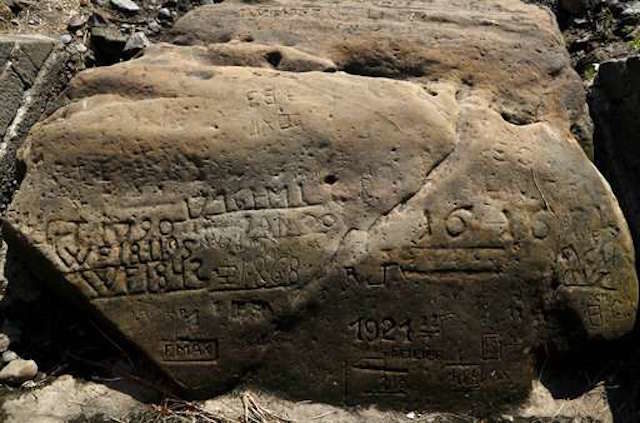
© AP /Petr David JosekOn of the so called "hunger stones" exposed by the low level of water in the Elbe river is seen in Decin, Czech Republic, Thursday, Aug. 23, 2018. The low level of water caused by the recent drought has exposed some stones at the river bed whose appearances in history meant for people to get ready for troubles. They are known as the "hunger stones" and they were chosen in the past to record low water levels.
Due to this summer's drought in Central Europe, boulders known as "hunger stones" are reappearing in the Elbe River.
The low water levels in the river that begins in the Czech Republic then crosses Germany into the North Sea has exposed stones on the river bed whose appearances in history used to warn people that hard times were coming.
Over a dozen of the hunger stones, chosen to record low water levels, can now be seen in and near the northern Czech town of Decin near the German border.
The oldest water mark visible dates to 1616. That stone, is considered the oldest hydrological landmark in Central Europe, bears a chiseled inscription in German that says: "When you see me, cry."
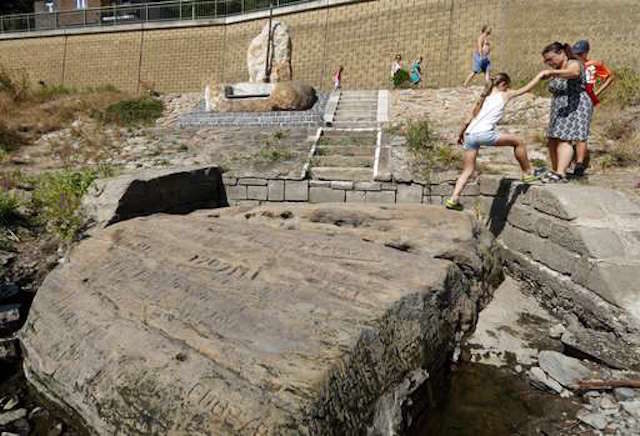
© AP Petr David JosekPeople visit one of the so called "hunger stones" exposed by the low level of water in the Elbe river in Decin, Czech Republic, Thursday, Aug. 23, 2018.
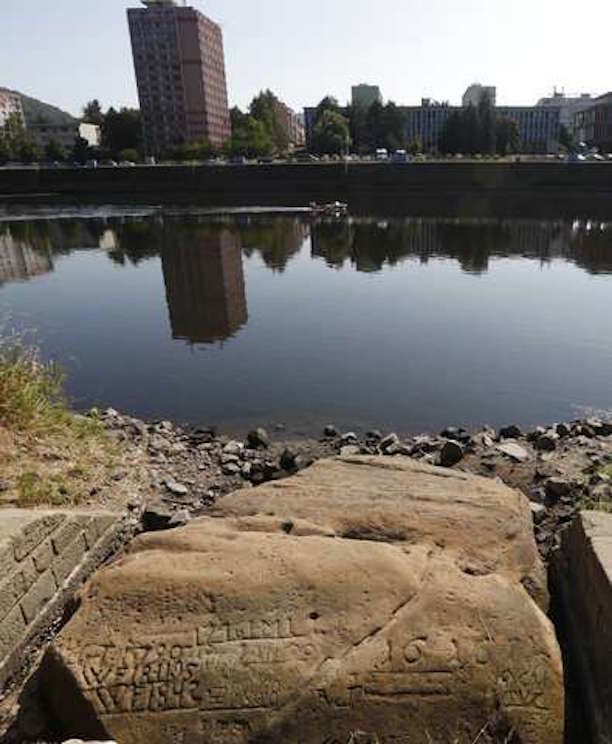
© AP Photo/Petr David JosekOne of the so called "hunger stones" exposed by the low level of water in the Elbe river in Decin, Czech Republic, Thursday, Aug. 23, 2018.
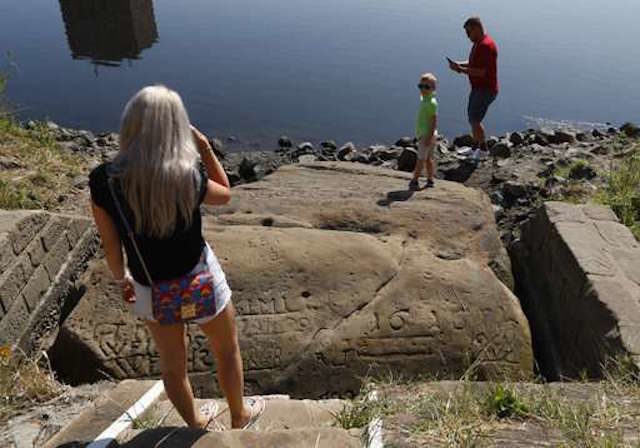
© AP Photo/Petr David JosekPeople visit one of the so called "hunger stones" exposed by the low level of water in the Elbe river in Decin, Czech Republic.
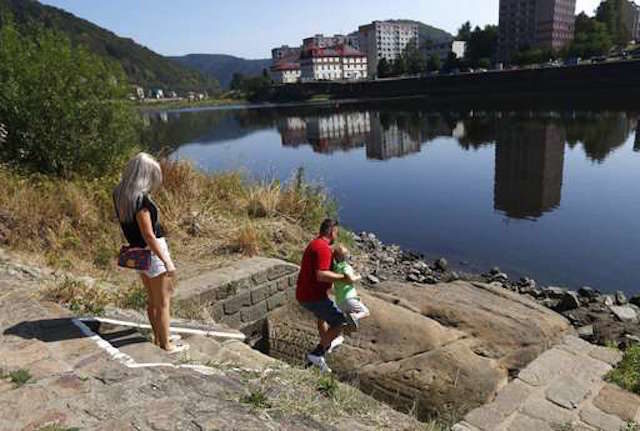
© AP Photo/Petr David Josek








Reader Comments
A warning from the past?
As in, when this stone is visible because the river level drops beyond it, trouble lies ahead?